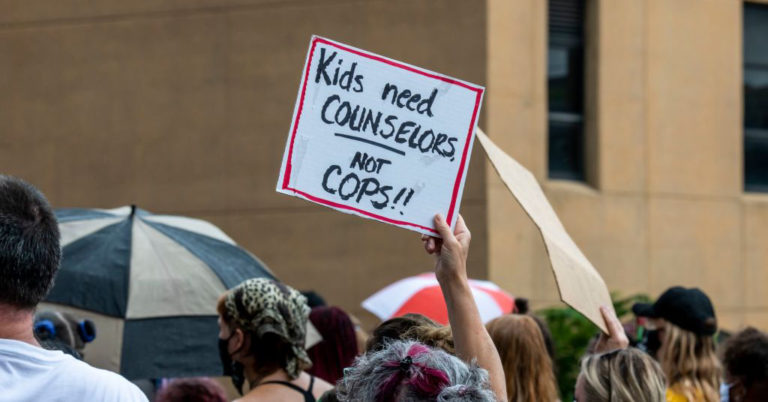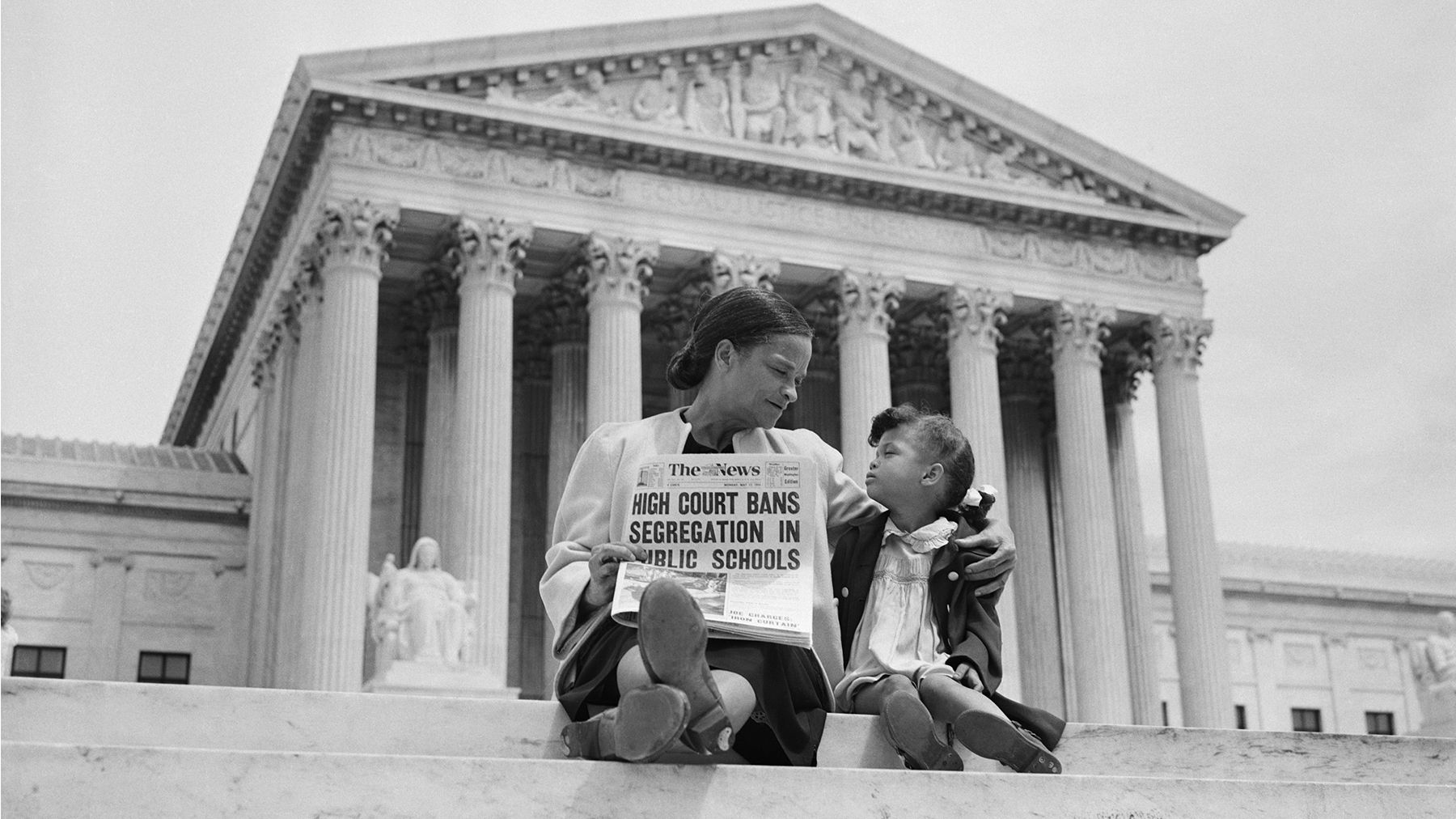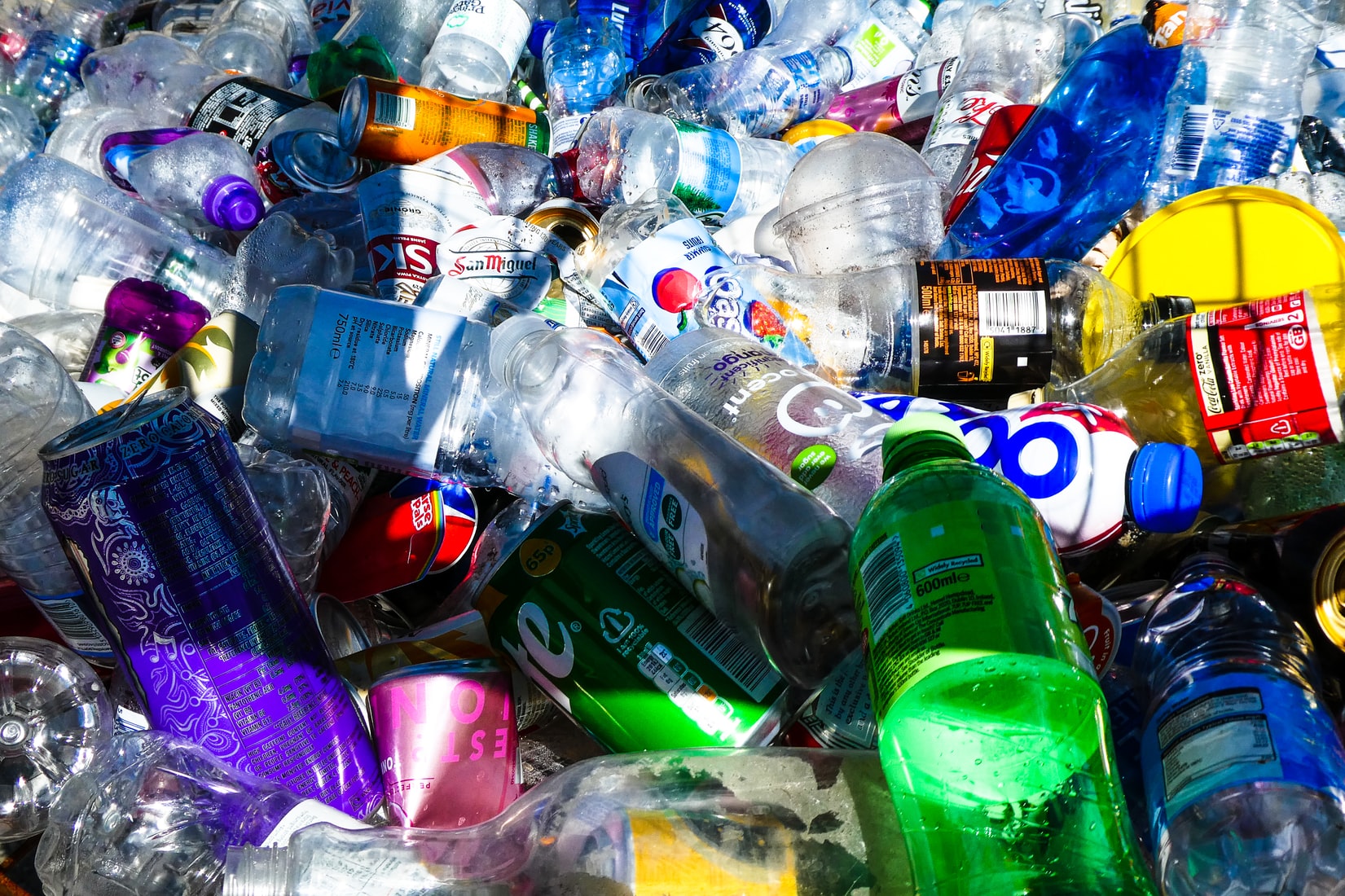The first time a police officer was placed inside a public school in The States was during the 1950’s in Flint, Michigan. In this role, this officer – like many others at the time – was actively surveilling Black and Brown communities (Hinton, 2016). He was there to develop relationships with local children while also providing a level of protection due to the neighborhood policing programs that were implemented in cities across the United States.
The rise of police in school coincided with surveillance strategies such as ‘broken windows’ policing and stop-and-frisk policies. These programs flourished in low-income neighborhoods, and the resources available to officers in this area became a critical cog in the school-to-prison pipeline; a term used to describe how American schools put some youth on a one-way path to the prison system.
It is widely documented that this system disproportionately impacts students of color, primarily Black students. Data collected by the Office for Civil Rights show that 44.9% of students who missed school due to suspensions were Black, yet they comprise only 16% of the student population. Further research showed 34.8% of the students expelled were Black and 31% of students referred to law enforcement were also Black. The rates were disproportionately high for Hispanic and Latinx students as well, at 19.4%, 21.3%, and 25% respectively.
“We can’t overlook the message this sends to students; you are too bad to go to the one place all kids are supposed to go for growth and development.”
Exclusionary school discipline is the primary way students get exposed to the criminal justice system. It can happen directly, like when resource officers or local police arrest students at schools. Most of the time this exposure is indirect and takes place when students miss school because they were suspended or expelled. When students are absent, they are more likely to drop out because they fall behind. Furthermore, children are usually left at home without supervision because their parents or guardians have to work, which often leads youth to develop negative peer influences, increasing the risk of criminal involvement.
Disparities in school discipline are related to a host of factors. They are represented through the general over-policing of poor communities, implicit (and sometimes explicit) racism of teachers and administrators, a lack of resources at schools in poor neighborhoods, and a general lack of resources in those same neighborhoods.

Even among Black children, the pipeline is not equally mandated. Black children who attend majority White schools in addition to those with disabilities are at higher risk than others. To fully understand the workings of the relationship between schools and prisons we must take an intersectional approach.
Through this lens, the rate of disability in students exposed to the carceral system or as I call it, the special education-to-prison pipeline cannot be ignored.
People with disabilities — particularly intellectual, psychiatric, and developmental disabilities — are disproportionately represented in the criminal justice system. From difficulties understanding laws and officer instructions to unstable housing and unemployment, there are a host of reasons people with disabilities come in contact with the criminal justice system.
However, it is increasingly the case that this contact starts in the school system.
While 14% of students in The United States are served under IDEA, meaning they are receiving some kind of special education support, 26.8% of students who missed school days due to out of school suspensions were disabled. Further, 24.6% of expulsions and 28.2% of students referred to law enforcement were students with disabilities. These are students who are receiving services for their disabilities, and thus should have accommodations and flexibility for their behavioral, educational, and communication differences.
The Department of Education’s 2016 report, “Racial and Ethnic Disparities in Special Education” shows that Black students are 8.21 times more likely to have a disability than non-Black students. However, a closer look reveals disparities in the types of disabilities being diagnosed.
Black students are more likely to have an emotional behavior disorder or general intellectual disability disorder, which are more stigmatizing and garner fewer resources. There are disparities in the allocation of resources available to Black students because more resources are allocated to the categories of disability which White students are more likely to be diagnosed such as autism, speech, and language impairments.
Related Articles: Motherhood and Disability | Policing Mental Illness
Black students with disabilities were drastically more likely to be kicked entirely out of school—6.15 times more likely than non-Black students. Hispanic and Latinx students followed second and were 0.37 times more likely than their peers to be “Totally Removed” from school.
While race and disability are the strongest combinations of identities for the special education-to -prison pipeline, class, gender, and sexuality cannot be ignored.
A student’s placement in special education and their early involvement in the criminal justice system is heavily dependent on income. Poverty disproportionately impacts Black families and exposes children to stress, poor nutrition, environmental toxins, and violence, all of which can lead to childhood disability.
Boys are more likely than girls to be put in special education, which reflects gender disparities in identifying students with disabilities than it does actual differences in disability rates by gender. Boys are also more likely to be subject to school discipline than girls and LGBTQIA+ students are more likely to be kicked out of homes and disciplined at school at a higher rate. This puts them on the pipeline to prison as well (Mallett, 2017).
It may be tempting to talk about how at-risk, low-income Black children who identify as part of the LGBTQIA+ community compound the risk of being diagnosed with a disability due to the effects of poverty on their mental and physical health. However, intersectionality tells us that while somewhat true, the story isn’t that simple.
Patricia Hill Collins, a prominent Black female sociologist, described the ‘matrix of domination’ created by our various social identities. The matrix of domination helps us think about the unique ways social identities create experiences of oppression due to their interactions with important social systems, like schools, prisons, housing, healthcare, and even transportation. It helps us think about how some people are exposed to structural violence, while others are shielded from it. Collins urges us to consider an interlocking perspective of social identities, rather than an additive one.

These intersecting identities shape people’s lives because of the way social institutions choose to help or hinder them. If we are going to tackle the school to prison pipeline and the special education to prison pipeline, we must become accustomed to navigating complexities.
—
About the Author: Jennifer C. Sarrett teaches and studies topics related to equity, ethics, heath, and disability at Emory University’s Center for the Study of Human Health. Her current research focuses on intellectual and developmental disabilities in the criminal justice system. You can learn more about her work at www.jennifersarrett.com.
Editor’s Note: The opinions expressed here by Impakter.com columnists are their own, not those of Impakter.com. — In the Featured Photo: Linda Brown (right) with her mom Leola Brown who holds a newspaper detailing the U.S. Supreme Court’s decision to ban segregation in U.S. public schools, circa 1954. According to the Southern Poverty Law Center over 66 years after the courts ruled in favor of Brown v. Board of Education of Topeka, schools across the South are still separate and unequal. — Featured Photo Credit: Southern Poverty Law Center.











